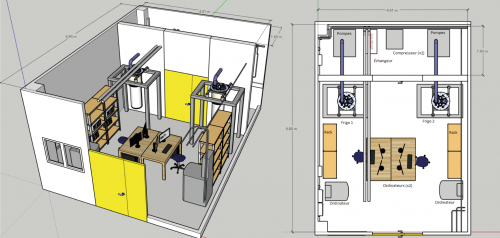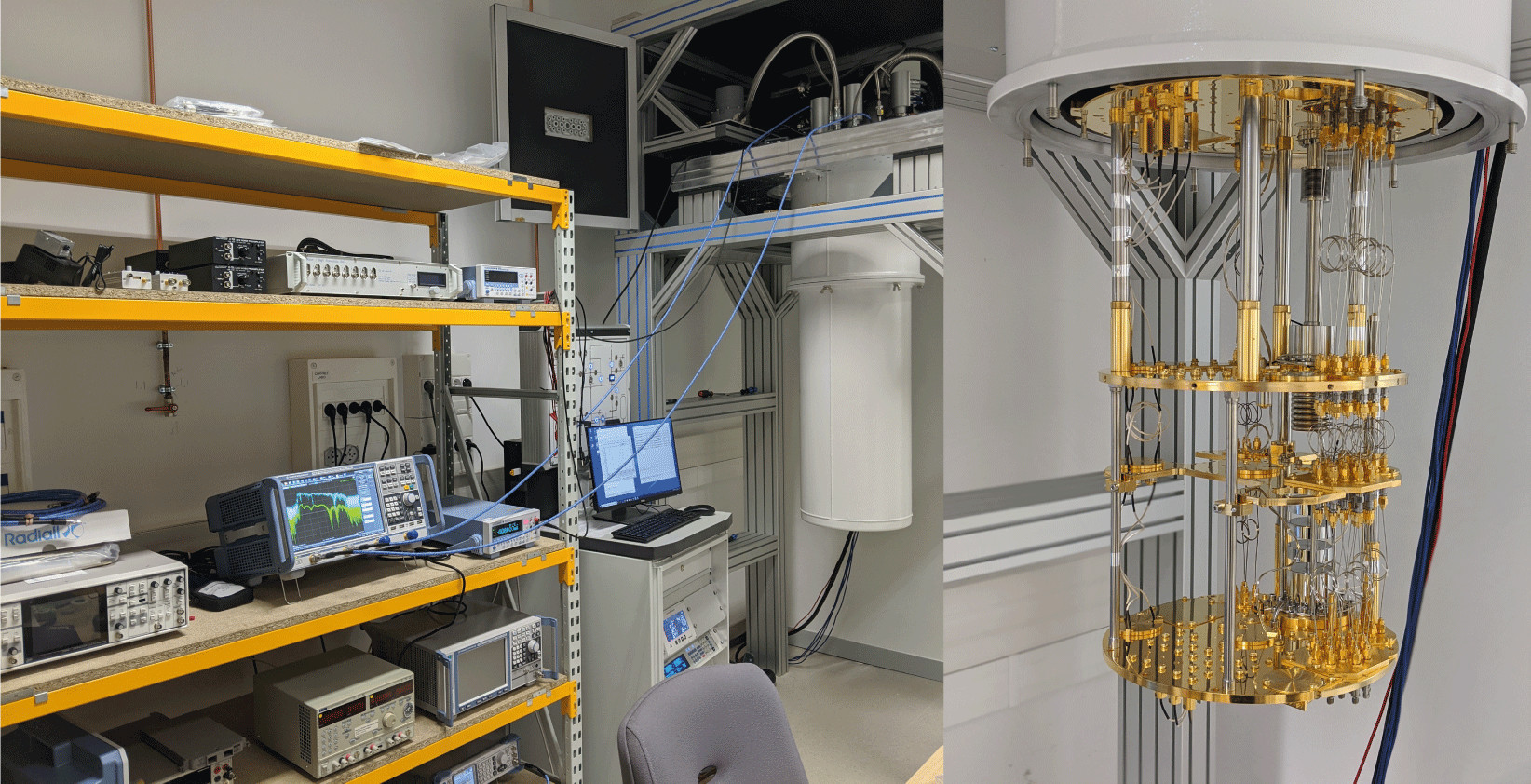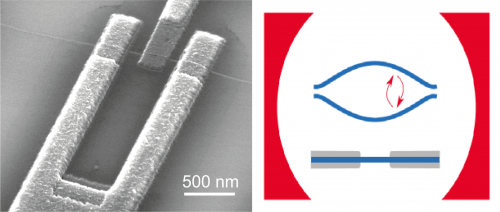Research
History

The QCMX Lab was created in September 2017 by Landry Bretheau and Jean-Damien Pillet. Since then, we’ve been building up from scratch a brand new laboratory dedicated to the development and measurement of hybrid quantum circuits. This requires access to temperatures close to absolute zero (few mK), nanofabrication tools for the creation of new architectures and electronic instruments in the DC and microwave range for quantum control. The QCMX Lab currently contains two dilution cryostats (from the company BlueFors), which makes it the coldest point of l’X.

Research
One of the crucial ingredients for the operation of quantum circuits is the non-linearity provided by a non-dissipative electronic component called a Josephson junction. These junctions are usually made of two superconductors coupled by tunnel effect through a thin insulating barrier. There is however a wider class of Josephson junctions where superconductors are connected by quantum conductors, such as graphene, semiconductor nanowires or carbon nanotubes. In these systems, barely exploited in the context of quantum circuits, physics is richer because they host additional degrees of freedom associated with the electronic properties of quantum conductors.
We want to use this unexploited resource to design new quantum devices, notably through the development of ultra-clean growth of carbon nanotubes that can be integrated into superconducting circuits. Such Josephson junctions then host elementary electronic excitations in the GHz energy range that can be controlled coherently by means of microwave signals. Our circuits, placed in a microwave cavity to protect it from environmental decoherence, will allow to detect new electronic states of matter such as, for example, Andreev Bound States, Weyl fermions or Majorana fermions.

Hybrid quantum circuit architectures as developed within the QCMX Lab offer tremendous opportunities for quantum simulation, particularly to answer modern questions of fundamental Physics. For example, a charge trapped in a nanotube or a semiconducting nanowire, connected in parallel to a Josephson junction can simulate the problem of a spin 1/2 immersed in a space-dependent magnetic field. In the quantum regime, the degrees of freedom of spin and position are entangled and obey a joined dynamic of great complexity. This experiment would make it possible to understand in more details the spin-boson model which is at the heart of the description of the dissipation in quantum physics.
Beyond this basic situation, it is possible to imagine more complex systems based on networks of several quantum objects. For example, a carbon nanotube connected to multiple superconducting electrodes may behave as a network of quantum dots. Strategies to perform the quantum teleportation of an electron within such electronic device are currently developing.